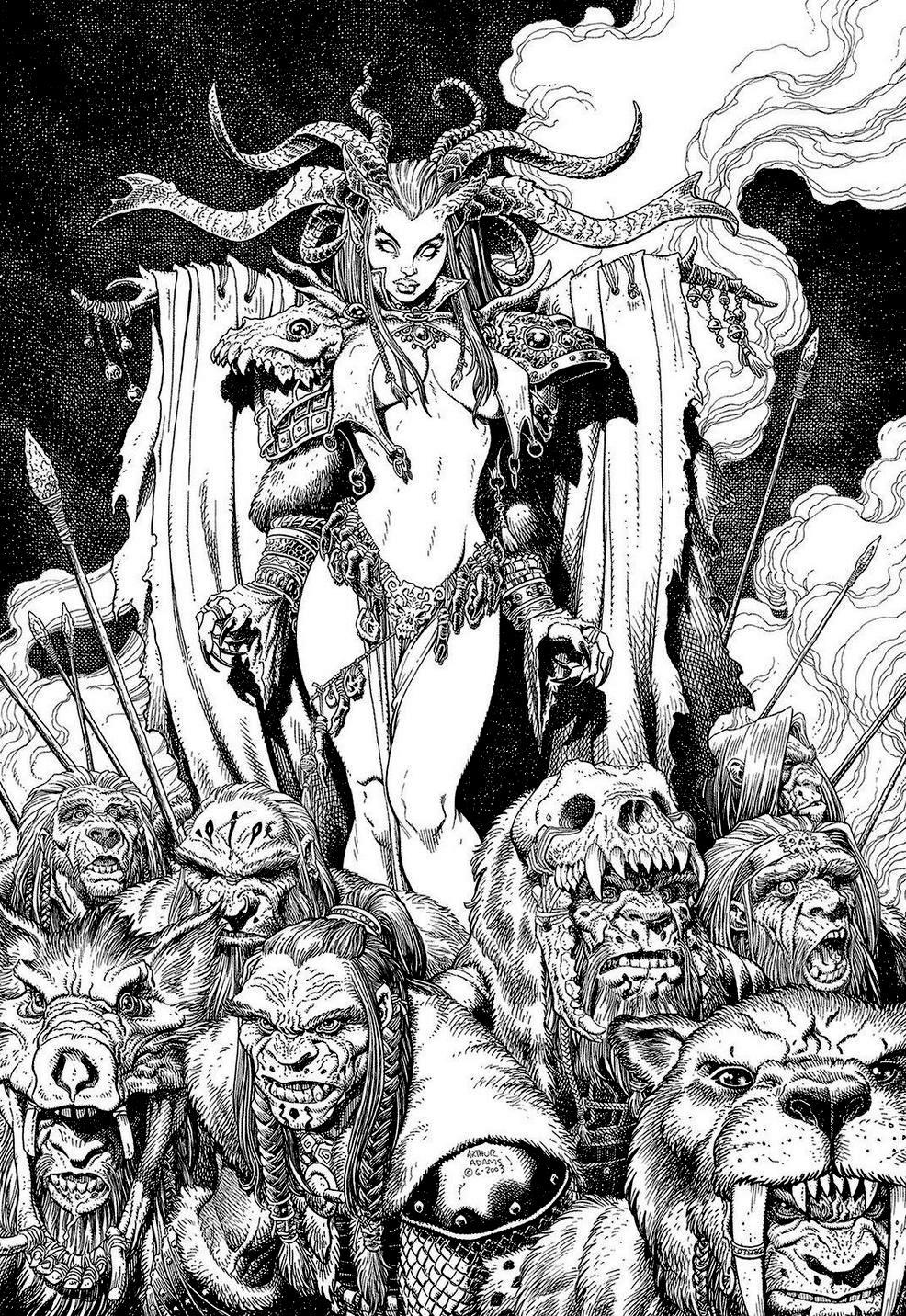"Know, O prince, that between the years when the oceans drank Númenor and the gleaming cities, and the years of the Fourth Age, there was an Age undreamed of, when realms of Elf, Man, and Dwarf lay spread across the world like blue mantles beneath the stars. . . Hither came Aragorn of the Dúnedain, black-haired, sullen-eyed, sword in hand, a ranger, a wander, a chieftain, with gigantic melancholies and gigantic mirth, to tread the thrones of Arda under his feet."
- The Red Book of Westmarch
I posted that bit of Howardian remix on G+ yesterday goofing around, but it's a serious idea: What would Middle-earth be if presented in a more pulp fantasy (not just Robert E. Howard) sort of way? You could do a really comprehensive overall, sure, where maybe only the names remain the same, but I think a few tweaks here and there would make a big difference. Just take a look at things that are already pretty pulpy: 1) a fallen age following the sinking of a "Atlantis"; (2) Orders of beings with some more advanced and others more degenerate than others; (3) a lot of ruins strewn about; (4) a lot of wilderness separating civilized areas; (5) Magic (to the extent it is practiced by Men--i.e. humans) seems the province of sorcerers who are engaged with evil forces.
So let's start with
Eriador, also called the Lone-Lands, which is pretty cool, because that's where the stories do, and see how it goes. Eriador is definitely a "Points of Light" place; a former advanced kingdom where most of the cities have fallen into ruin after a war with a Witch-King.
Witch-King Cultists: When a guy named the Witch-King used to rule, I think there probably should be hidden enclaves (or whole villages) fallen to his service and maybe worship of Sauron or Morgoth. They probably also engage in sacrifices commiserate with their Satanic cultist behavior.
The Rangers of the North: The Dúnedain who struggled against the Witch-King were descendants of Numenoreans (like Conan was a descendant of Atlanteans). After their defeat they become badass wildland types organized into tribes or bands, I'd guess. They're about as much "barbarian" as Conan is, except they're in tight with elves. They roam the wilderness and hunt orcs and trolls (and probably those Witch-King cults). They could be part frontier lawmen, but also a lot like the settlers described in Howard's "Beyond the Black River":
"They were all gaunt and scarred and hard-eyed; sinewy and taciturn."
Replace the Picts in those Pictish Border Howard stories with orcs or Hill-men, and you've got it. Or replace Solomon Kane in any of a few of his stories with a lone ranger (heh), and that works as well.
Woses: Speaking of Picts, a couple of Howard's Pict stories are perfect inspiration for the mistreated, more primitive
Drúedain. Check out "
The Lost Race." Here's a perfect description:
"Scarce above four feet stood the tallest, and they were small of build and very dark of complexion. Their eyes were black; and most of them went stooped forward, as if from a lifetime spent in crouching and hiding; peering furtively on all sides. They were armed with small bows, arrows, spears and daggers, all pointed, not with crudely worked bronze but with flint and obsidian, of the finest workmanship. They were dressed in finely dressed hides of rabbits and other small animals, and a kind of coarse cloth; and many were tattooed from head to foot in ocher and woad"
Hill-Men: Again speaking of Picts, in either Howards frontier stories or some of his other Pictish yarns where their degeneration is more sinister (after Machen) and less sad, the Hill-Men can be those sort of Picts. A little degeneration won't hurt. They're really likely to be those cultists mentioned above, too.
The towns: As to the civilized or more settled areas of Eriador. I strongly support MERP's idea that Tharbad (before it was a ruin) was a decaying city of cutthroats and thieves. A standard Conan tavern ought to fit in well, in any of those towns, too. Just substitute "Brythunian" with "Breeland" and you're good to go.
The humans are easy, I suppose. Next up, Elves, Dwarves, and Hobbitses.




















